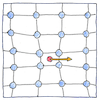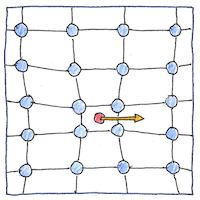John Bardeen,
Leon Cooper,
John Robert Schrieffer
physics

|
BCS theory
John Bardeen collaborated with Leon Cooper and John Robert Schrieffer to explain superconductivity using Cooper’s concept of Cooper pairs. The Pauli exclusion principle creates a Fermi surface that warps in the presence of an electron to attract a second electron, overcoming their Coulomb repulsion. The electron pairs create a Fermionic condensate and vibrates in a shared quantum state to become superfluidic, superconductive, and diamagnetic.
Ansatz
It was an educated guess confirmed by later experiments. It was only a theory that predicted testable implications. It was an approximation and further work was needed.
Becoming common
Theoretical physics, a math problem, a concept of how things work together becomes less theoretical when it changes lives and makes miracles common.



Heike Kamerlingh Onnes discovered superconductivity in 1911, but before this no one could explain how materials lost all resistance. However, this theory does not predict which materials can superconduct, does not not explain the behavior of new high-temperature superconductors.
See also in The book of science:
Readings in wikipedia: